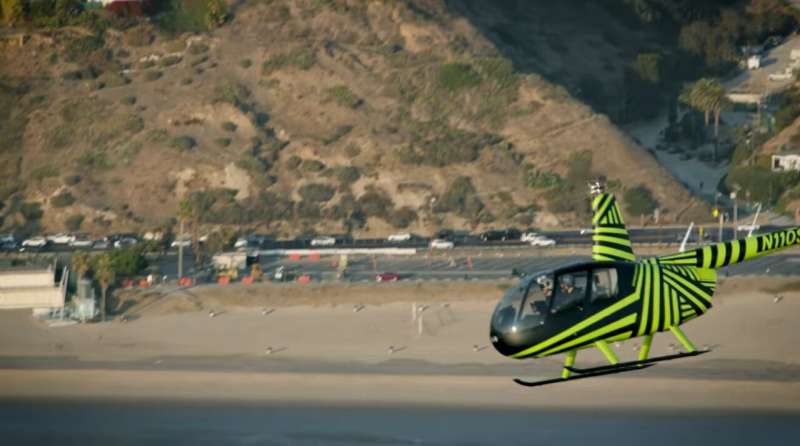December 18, 2019 weblog
Commuting in the sky: Flight system tech in demo debut

No potholes, no fender-benders, no middle-finger greetings when you try to pass, no lane closings, no long delays....just travel between cities quickly if done skyward, and for the tired commuters (cut to mighty violins) a welcomed future of transport.
Sean Captain writing in Fast Company shared some information about the California-based company wanting to bring helicopter commuting to our future, and it is a startup helmed by a 29 year old engineer, Mark Groden, Skyryse CEO.
Skyryse made news because it put its helicopter Luna to the test in a demo, making Luna a fully autonomous skyward machine that can take ride-sharing passengers where they want to go.
Luna is a modified FAA-approved helicopter equipped with a flying system, namely, Skyryse Flight Stack.
Hold that thought: A modified FAA-approved helicopter... the company has come up with flight technology designed to be fitted to existing helicopters. What exactly is the Flight Stack tech that aims to support the future of flying-taxi transport?
Nick Lavars in New Atlas had a market observation along with details. "Whereas Volocopter, Uber and a host of others are developing purpose-built VTOL aircraft that take off, fly and land themselves, Skyryse is focusing on tech that can give today's standard aircraft these same capabilities."
He further described the suite of technologies, which included: (1) sensors that steer the aircraft and keep it stable (2) a set of smart helipads fitted with ground sensors that track low-flying objects and communicate wind and weather conditions.
The company promotes its automation platform as designed to bring "urban air travel" mainstream. The stack comprises technology that "automates flight in FAA-approved helicopters, safety and communication systems, and a network of smart helipads to ultimately create a new transportation system in the sky. It is a full flight—from takeoff, flight, and landing—without a human pilot's hands on the controls.
The technology is designed to manage flight dynamics accurately. Any human intervention? Captain, referring to the company's video, said that "A human pilot is on board, however, their hands inches away from the controls, ready to take over."
If this is a vision of the future, does it imply human pilots will be replaced by machines? Not the way Skyrese sees it. The human pilot is part of the self-flying picture; it just changes the pilot's focus away from second by second endeavors to keep the machine steady, said Fast Company, to a newer role to focus on the mission.
Also, said Captain, "Groden doesn't want to take pilots out of helicopters. He wants to put a lot more pilots in them—newer ones ready to start flying after accruing hundreds, rather than thousands, of hours of flight experience."
A company news release said the Skyryse Flight Stack is initially designed for the Robinson R-44, an FAA-approved helicopter in wide use today. Each component of the system works in triplicate with airline-grade, fail-operational technology to ensure that automation functions remain operational at all times, even in the presence of equipment failures."
Groden sees the positive in taking rides for granted. Fast Company quoted him. "If I asked you the last time you were in an elevator, you probably wouldn't remember," says Groden. For him in this context, forgettability just "indicates that it is such a consistent and safe and reliable service." Groden's goal, said Captain, "is to make flying as routine as an elevator ride."
More information: skyryse.com/
© 2019 Science X Network

















